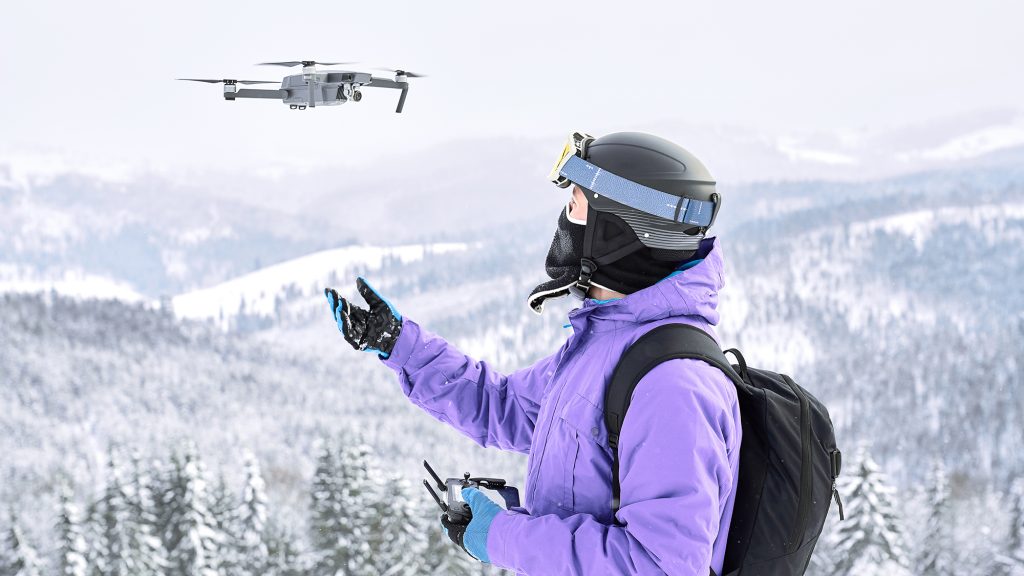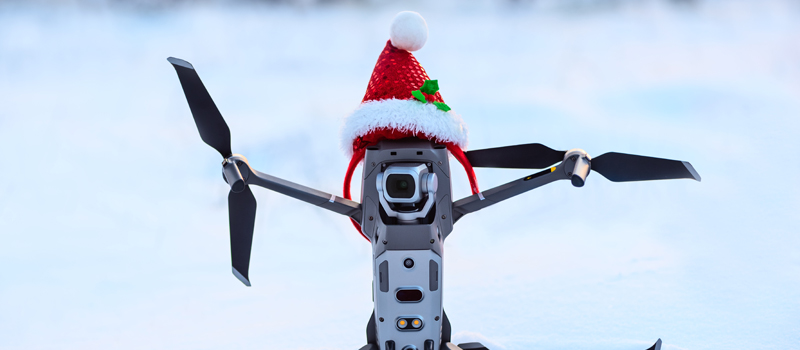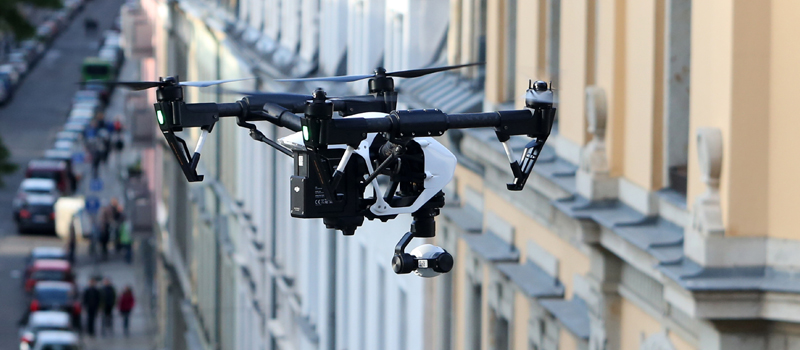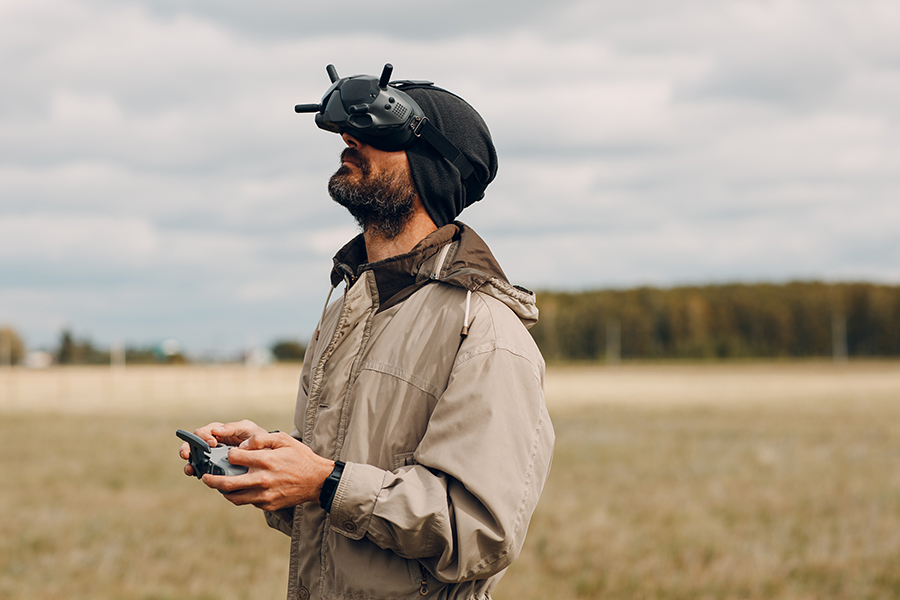While doing an outdoor activity like flying a drone is less than ideal during winter, it’s not completely impossible. If you’re a professional drone pilot, then you might not even have much of a choice, especially if you work in the public safety sector.
Whether for work or just for fun, there are still ways for you to fly your drone during winter. However, there are some safety measures that are unique to winter flight. To keep you and your drone safe while flying in winter, here are some tips to keep in mind.
Keep a close eye on your battery
Battery management is arguably the most important part of flying a drone in winter. If you’ve never flown a drone in winter before, the changes in battery behavior may come out as very surprising for you.
For batteries to provide power, chemical reactions need to take place between their terminals and the electrolyte solution. While this reaction can still proceed under very low temperature conditions, they do so a lot slower and at reduced capacity. This can make the battery unstable and may even result in its power cutting off suddenly – bad news if your drone is already airborne.
It is considered good practice to pre-heat a battery before use to room temperature. This is not a problem for drones with self-heating batteries, including high-end models such as the DJI Mavic 2 Enterprise and the Inspire 2.
Another thing to remember is the fact that batteries discharge faster during winter. The cold temperature significantly contributes to this effect. It is also common to have to fly against strong winds during winter.
With the expectation that your battery will not last as long as usual, it would be prudent to be more vigilant about watching over your drone’s battery level. If you can normally get 25 minutes of flight out of your drone battery, then expect a downgrade of your battery life to around only 20 minutes.
You may also want to the batteries in your controller or mobile device. Keep a few spare batteries or power banks just in case the ones you have in your devices suddenly conk out. A controller dying out on you while your drone is airborne certainly seems like an anxiety-inducing situation.
Check updated sunrise and sunset forecasts

Although the FAA has been making changes to the rules on flying drones at night, there are still certain safety measures required for flying drones past daytime. If your drone does not have anti-collision lights or if you have not taken the required training for night flight, then be wary of shortened periods of daylight during winter.
Depending on where you live, daytime during winter can be a lot shorter than 12 hours. This is something you will need to plan for, especially if you’re doing light-sensitive work like aerial photography, surveillance, or mapping via photogrammetry. A good pair of anti-collision lights would also be a good investment if you’re planning to fly a drone in winter, considering the challenges in visibility.
Lighting conditions can be challenging
If you’ve never done photography in winter before, then flying a drone in winter to get aerial shots is going to be a tough learning experience. There are two sides to this struggle – you could end up with underexposed photos because of overcast conditions or snap photos with a lot of glare from the snow.
When there’s active rainfall, there’s a good chance that there are also dark clouds overcast. When this happens, increase your ISO settings and slow down your shutter speed. You may also have to reduce your drone’s flight speed to a very low number (around 2 mph) to avoid motion blur artifacts.
Take note that some photos may turn out grainy at very high ISO settings. When this happens, reduce your ISO and try to compensate with white balance. It may sound like a complex matter, but this is no different from shooting photos in any area with poor lighting.
Snow glare is a unique challenge of doing photography in winter. This happens when the skies are clear and the sunlight bounces off the naturally reflective snow. A circular polarizing filter is the best tool to handle such a situation. Make sure to get one that is specifically designed for your drone, as drone cameras rarely carry shared form factors.
Avoid flying in too much moisture
Hail, fog, and snow are very common during winter. Aside from reducing visibility, the increase in moisture indicated by these conditions can also cause harm to your drone’s components and internal systems.

It hardly needs to be said but flying a drone while it’s snowing heavily or in the midst of hails is certainly a bad idea. Even a slight fog can be problematic, especially when it compromises visibility below the three-mile recommendation. Fog can be particularly insidious and cause moisture to get into your drone’s motors and electrical components.
Moisture on the ground is also something you’ll need to watch out for. If you can’t find a landing spot free of snow, use a foldable landing pad. This will prevent moisture in the ground from getting into your drone’s camera and gimbal.
As temperature drops, any moisture trapped in your drone’s body will cause it to freeze up. Monitor the temperature as you fly your drone as any freezing in the propellers or motors will easily cause the drone to crash.
If you must fly your drone even in heavy snow or freezing temperatures, then make sure to do so using a drone with the appropriate ingress protection (IP) rating. The DJI Matrice 210 is a good example. We consider an IP rating of 43 to be the minimum for flying a drone in conditions with heavy moisture or extremely low temperatures.
Dress accordingly
With much of your focus going towards making your drone ready for winter flight, you also should not forget about yourself. You will be as exposed to winter conditions as your drone, so make sure to dress properly.
Don’t forget your winter coat, hat, and gloves. As much as using a controller with gloves reduces your dexterity, you will also less likely to lose control because of cold hands. There are gloves specifically designed to allow you to interface with touchscreen devices. If you’re going to need to move around a lot while flying your drone, invest in a good pair of boots. All the drone flight skills in the world won’t help you if you start suffering from hypothermia or can no longer feel your fingers
Final thoughts
Flying a drone in winter is not impossible. This is good news considering how winters have gotten harsher and longer in the last couple of years. However, flying a drone in winter is a completely different thing from flying one in summer. If you’ve never done it before, make sure that you are well-equipped before your drone even takes off.
Ultimately, postponing your drone operations will always be the safer option. If temperatures are close to freezing or if heavy snowfall is expected, you may want to put off your drone operations by a few days. Even a commercial contract should have provisions for avoiding work in extreme winter conditions.



